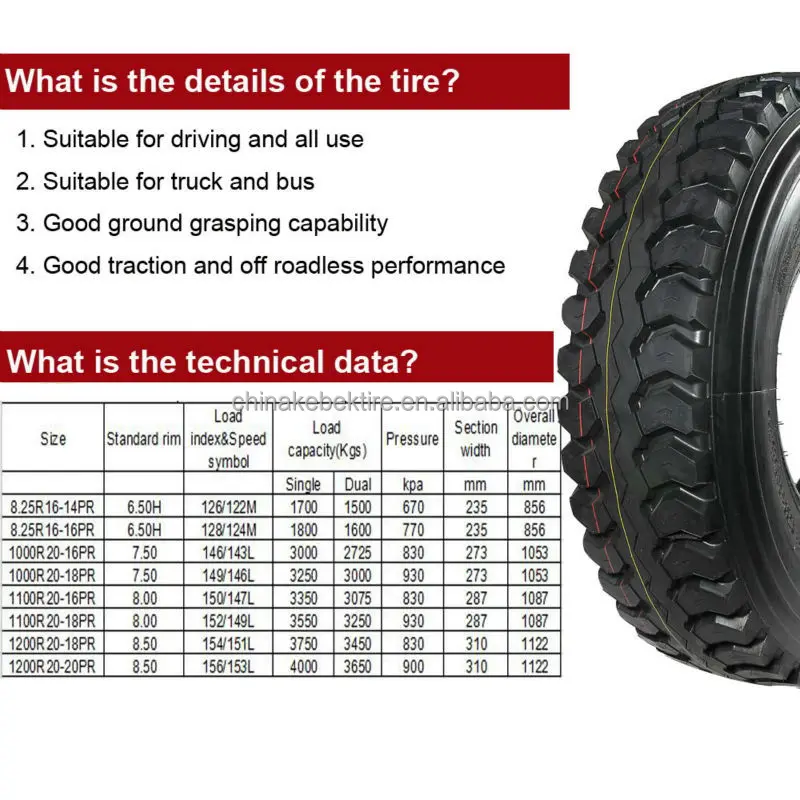With chain up law tickets sometimes reaching into the hundreds of dollars, it’s good to know before you go: We’ve collected state by state chain up laws by state for 2020— to help truckers avoid fines and be safe on the road out there:
One of your truck chains has something in common with a baby hippo, a standard bag of concrete, and a Hellfire Missile: they all four weigh in at about 100 pounds.
It’s no secret that chaining up can be a pain: Chains are heavy. Most chains weigh between 80-100 pounds. That’s a committed lift for a lot of drivers. It’s especially daunting when that lift is multiplied over several sets of chains. That said, with the weight and bother involved in working with chains, it’s helpful for drivers to practice chaining up before the weather gets bad. No driver wants to learn to put chains on their truck while kneeling in the snow during a storm, with vehicles spraying slush at them, and conditions worsening by the minute.
It’s worth noting that many experienced drivers don’t go out during chain up orders: There’s a saying that if you need chains it’s too dangerous to drive, but regardless of the weather by law drivers have to have them for winter in some states. But what are those laws specifically? There’s a lot of variance— some states will fine drivers hundreds of dollars just for not carrying the right types of chains, while some don’t really have regulations around them.
CDLLife, with the help of information that first appeared on the ATBS website, has compiled state by state information on chain up laws:
Alabama
The use of tire chains shall be permitted upon any vehicle when required for safety because of snow, rain, or other conditions tending to cause a vehicle to slide or skid.
Alaska
You are not permitted to use chains from May 1 through September 15 when north of 60 North Latitude.
You are not permitted to use chains from April 15 through September 30 when south of 60 North Latitude.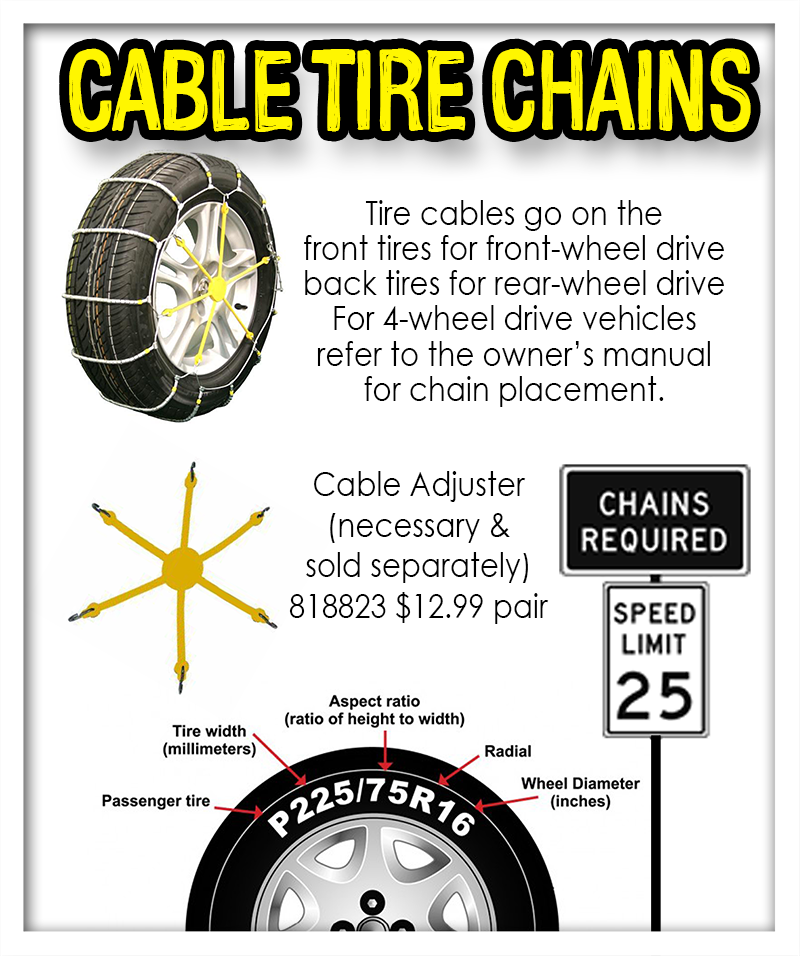
If you are operating a vehicle on Sterling Highway, you are not permitted to use chains from May 1 through September 15.
You will need to obtain a special permit from the Department of Administration if you would like to use chains in one of these prohibited zones.
Arizona
The use of tire chains are allowed when required for safety during a time of snow, ice, or another condition that might cause slippery highways.
Arkansas
The use of tire chains are allowed when required for safety during a time of snow, ice, or another condition that might cause slippery highways.
California
California does not require trucks to carry chains during any specified time period. When the weather hits, though, it takes at least eight chains for a standard tractor-trailer configuration to comply with the regulations.
During the winter months, there might be traction chain controls in the mountain areas. When these are established you will see signs posted along the highway. These signs will also include the type of requirement, which will include one of the following:
When these are established you will see signs posted along the highway. These signs will also include the type of requirement, which will include one of the following:
Colorado
From September 1 through May 31, all trucks must carry sufficient chains on I-70 when traveling between mile marker 259 outside Golden, CO and mile marker 133 in Dotsero, CO. If you get stopped and do not have chains on your truck, the fine is $50 plus a surcharge of $16.
If you do not put chains on your truck when the law is in effect, the fine is $500 plus a $78 surcharge. If you do not put chains on and you end up blocking the highway, then the fine will increase to $1,000 plus a $156 surcharge.
If you do not put chains on and you end up blocking the highway, then the fine will increase to $1,000 plus a $156 surcharge.
Colorado has two different types of chain laws:
Connecticut
Chains are permitted during hazardous weather from November 15 through April 30. The chains can not be damaging to the highway’s surface.
Delaware
You are permitted to use chains on highways from October 15 through April 15.
Georgia
At any time the Georgia Department of Transportation may close or limit access to certain highways during inclement weather.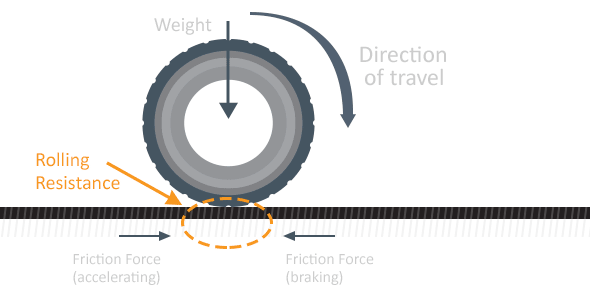 If this occurs, signage will be placed to inform drivers that chains are required in order to proceed.
If this occurs, signage will be placed to inform drivers that chains are required in order to proceed.
For commercial vehicles, chains must be placed on the outermost drive tires.
Idaho
Officials with the Idaho Department of Transportation can determine that it is unsafe to drive over Lookout Pass and Fourth of July Pass on I-90, and Lolo Pass on Highway 12. If it is deemed unsafe, then you will be required to chain up a minimum of one tire on each drive axle and one axle at or near the rear.
Illinois
The use of tire chains are allowed when required for safety during a time of snow, ice, or another condition that might cause slippery highways.
Indiana
The use of tire chains are allowed when required for safety during a time of snow, ice, or another condition that might cause slippery highways.
Iowa
The use of tire chains are allowed when required for safety during a time of snow, ice, or another condition that might cause slippery highways.
Kansas
The use of tire chains are allowed when required for safety during a time of snow, ice, or another condition that might cause slippery highways.
Kentucky
No person shall use on a highway not covered with ice a vehicle with a chained wheel unless the wheel rests upon an ice-shoe at least 6 inches wide. When chains are used on rubber-tired vehicles, the cross chains shall be not more than three-fourths (3/4) of an inch in thickness or diameter, and shall be spaced not more than ten inches apart, around the circumference of the tires.
Louisiana
The use of tire chains are allowed when required for safety during a time of snow, ice, or another condition that might cause slippery highways.
Maine
Vehicles cannot have tires with metal studs, wires, spikes or other metal protruding from the tire tread from May 1 through Oct. 1. Other than that the use of tire chains are allowed when required for safety during a time of snow, ice, or another condition that might cause slippery highways.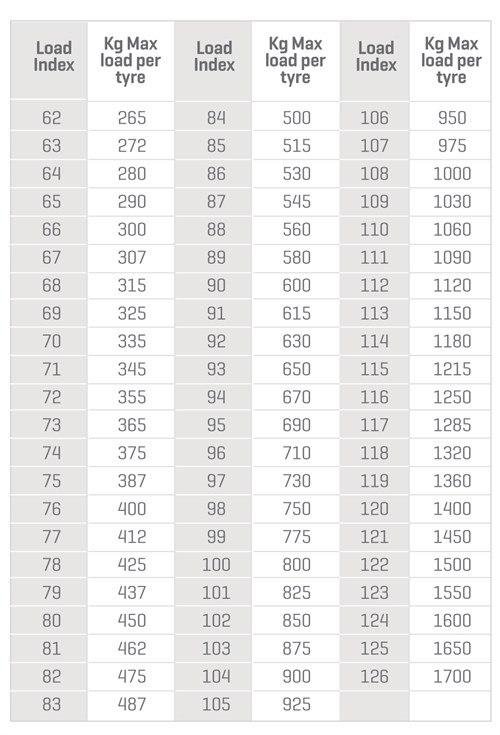
Maryland
The use of tire chains are allowed when required for safety during a time of snow, ice, or another condition that might cause slippery highways.
Massachusetts
Massachusetts prohibits the use of studded tires and chains between May 1 and Nov. 1 without a permit. The use of tire chains are allowed when required for safety during a time of snow, ice, or another condition that might cause slippery highways.
Michigan
The use of chains is allowed for safety when snow, ice, or other condition are present. If chains are used, they must not come in direct contact with the roads surface.
Minnesota
The use of tire chains are allowed when required for safety during a time of snow, ice, or another condition that might cause slippery highways.
Mississippi
The use of tire chains are allowed when required for safety during a time of snow, ice, or another condition that might cause slippery highways.
Missouri
No person shall operate any motor vehicle upon any road or highway of this state between the first day of April and the first day of November while the motor vehicle is equipped with tires containing metal or carbide studs. The use of tire chains are allowed when required for safety during a time of snow, ice, or another condition that might cause slippery highways.
Montana
If the Montana Department of Transportation determines that highways are too dangerous for travel, they may establish the following recommendations on traction devices:
Nebraska
The use of tire chains are allowed when required for safety during a time of snow, ice, or another condition that might cause slippery highways.
Nevada
It is unlawful for any person to operate a motor vehicle, whether it is an emergency vehicle or otherwise, without traction devices, tire chains or snow tires upon any street or highway, under icy or snowy conditions, when the highway is marked or posted with signs for the requirement of traction devices, chains or snow tires.
If a highway is marked or posted with signs requiring the use of traction devices, tire chains or snow tires, a motor vehicle or combination of vehicles must be equipped with:
New Hampshire
The use of tire chains are allowed when required for safety during a time of snow, ice, or another condition that might cause slippery highways.
New Jersey
The use of tire chains are allowed when required for safety during a time of snow, ice, or another condition that might cause slippery highways.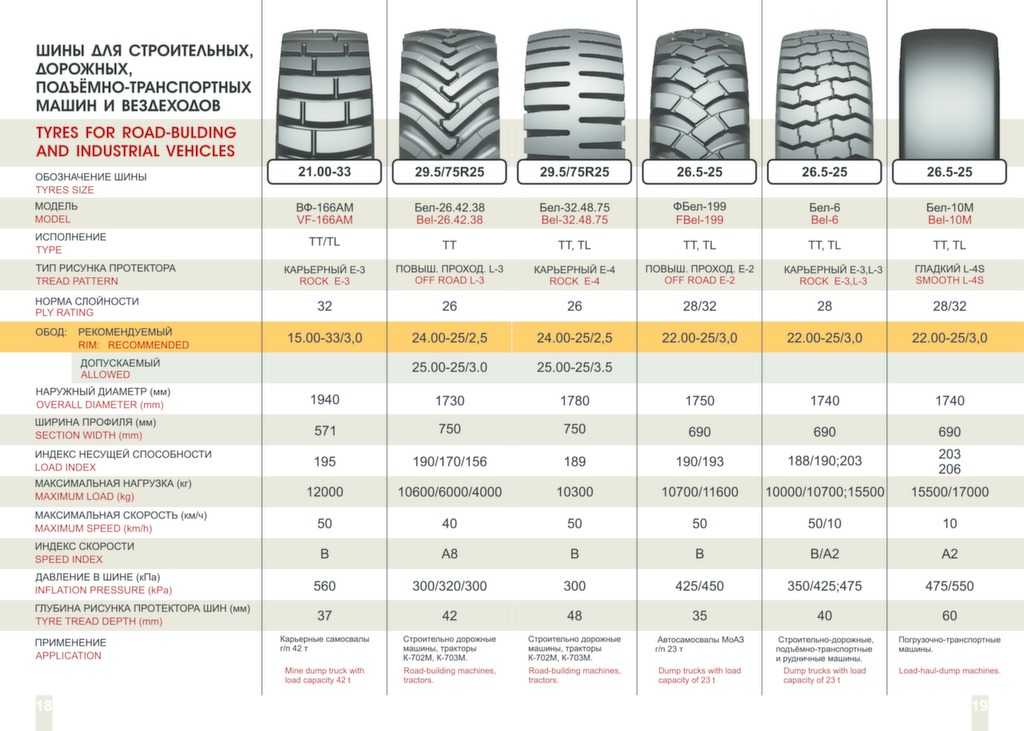
New Mexico
The use of tire chains are allowed when required for safety during a time of snow, ice, or another condition that might cause slippery highways.
New York
The use of tire chains are allowed when required for safety during a time of snow, ice, or another condition that might cause slippery highways.
North Carolina
The use of tire chains are allowed when required for safety during a time of snow, ice, or another condition that might cause slippery highways.
North Dakota
North Dakota also allows metal studs within 1/16 inch beyond tread from Oct. 15 through April 15. The use of tire chains are allowed when required for safety during a time of snow, ice, or another condition that might cause slippery highways.
Ohio
The use of tire chains are allowed when required for safety during a time of snow, ice, or another condition that might cause slippery highways.
Oklahoma
The use of tire chains are allowed when required for safety during a time of snow, ice, or another condition that might cause slippery highways.
Oregon
Oregon’s law applies to all highways in the state. Signs will tell you when you are required to carry chains and when you are required to use them. You will need to have six chains on hand to comply in Oregon. The use of tire chains are allowed when required for safety during a time of snow, ice, or another condition that might cause slippery highways.
Pennsylvania
The use of tire chains are allowed when required for safety during a time of snow, ice, or another condition that might cause slippery highways.
Rhode Island
The use of tire chains are allowed when required for safety during a time of snow, ice, or another condition that might cause slippery highways.
South Carolina
The use of tire chains are allowed when required for safety during a time of snow, ice, or another condition that might cause slippery highways.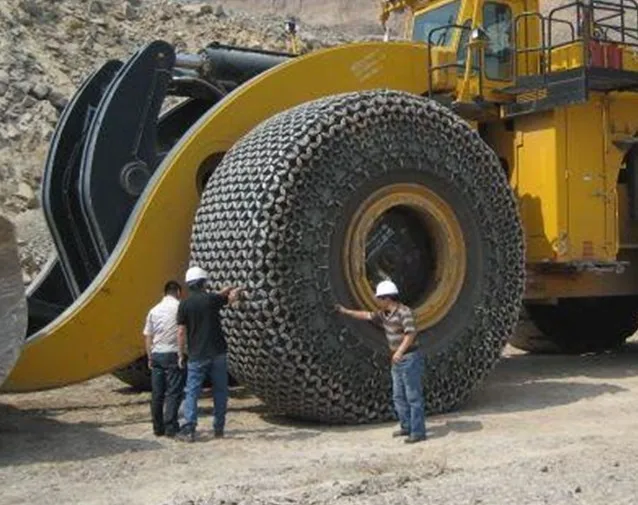
South Dakota
The South Dakota DOT has the authority to restrict travel on roads. Signs will alert you to these restrictions. The use of tire chains are allowed when required for safety during a time of snow, ice, or another condition that might cause slippery highways.
Tennessee
The use of tire chains are allowed when required for safety during a time of snow, ice, or another condition that might cause slippery highways.
Texas
The use of tire chains are allowed when required for safety during a time of snow, ice, or another condition that might cause slippery highways.
Utah
When any designated highway is so restricted no vehicle shall be allowed or permitted the use of the highway, during the period between October 1 and April 30, or when conditions warrant due to adverse, or hazardous weather or roadway conditions, as determined by the Utah Department of Transportation, unless:

Vermont
Vermont has a traffic committee that will decide if use of chains will be required. The use of tire chains are allowed when required for safety during a time of snow, ice, or another condition that might cause slippery highways. Vehicles with semitrailers or trailers that have a tandem-drive axle towing a trailer shall have chains:
Virginia
The use of tire chains are allowed when required for safety during a time of snow, ice, or another condition that might cause slippery highways.
Washington
Any commercial vehicle over 10,000 lbs. Gross vehicle weight rating should carry chains from November 1 to April 1 when driving on one of the following routes:
SR-97 between MP 145 and Milepost 185
SR-410 Enumclaw (MP 25) to SR-12 (MP 342)
SR-970 Cle Elum (MP 0) to Teanaway (MP 10)

SR-14 Gibbons Creek (MP 18) to Intersection of Cliffs Rd. (MP 108)
SR-542 (MP22) to (MP 57)
I-82 from Ellensburg (MP 3) to Selah (MP 26)
SR-20 Newhalem (MP 120) to Winthrop (MP 192)
SR-155 Omak (MP 79) to Nespelem (MP 45)
SR-97 Columbia River (MP 00) to Toppenish (MP 59)
SR-20 Tonasket (MP 262) to Kettle Falls (MP 342)
I-90 North Bend (MP 32) and Ellensburg (MP 101)
SR-2 Dryden (MP 108) to Index (MP 36)
SR-12 Packwood (MP 135) to Naches (MP 187)
West Virginia
The use of chains is allowed for safety when snow, ice, or other condition are present. If chains are used, they must not come in direct contact with the roads surface.
Wisconsin
The use of chains is allowed for safety when snow, ice, or other condition are present. If chains are used, they must not come in direct contact with the roads surface.
Wyoming
When the chain law is in effect due to snow, ice or other conditions, travel on a highway may be restricted to use only by motor vehicles utilizing adequate snow tires or tire chains. There are two levels.
Level 1: When conditions are hazardous, travel can be restricted to vehicles equipped with tire chains, vehicles with adequate snow tires, or all-wheel-drive vehicles.
Level 2: When conditions are extremely hazardous, travel can be restricted to vehicles equipped with tire chains or all-wheel-drive vehicles equipped with adequate mud and snow or all-weather-rated tires.
The operator of a commercial vehicle shall affix tire chains to at least two (2) of the drive wheels of the vehicle at opposite ends of the same drive axle when the vehicle is required to utilize tire chains under this subsection.
Any driver that is in violation will face a fine of no more than $250. If the violation results in the closure of all lanes in one or both directions of a highway, you will face a fine of no more than $750.
Visit ATBS Chain Up Laws By State for more information.
Table of Contents
1026 shares
Step by step instruction on chaining up a big rig.
If you are a truck driver, there may be times in your trucking career, you ‘may’ be required to chain up your truck.
If you run in areas that don’t get snow or icy conditions, consider yourself fortunate!
However, as a professional truck driver, you may wish to acquire this skill as you may find yourself in another job someday and it maybe necessary to chain up!
For example, there could be chain laws posted in an area where you’re traveling or your truck could be stuck.
This is how to ‘hang chains’.
This method involves the driver actually draping the chains over the wheels.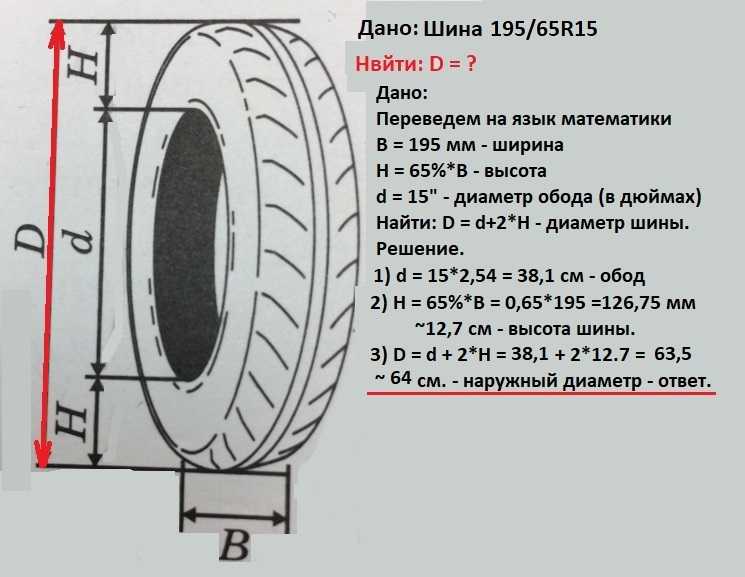
If your chains are very heavy, you may wish to use the second method.
Related > CDL Skills + Knowledge Every Professional Driver Should Know
When I’m satisfied the chains are in good working order, I pick up the chain on the side further away from me.
Spread the chains evenly over the surface of the tire. You already know they fit, as you dry fitted them.
I advocate for dangling an inch or two to one side of the tire, front or back and tucking the rest to the other side.
I pull and move the chains across the tread to get it centered as much as possible across the tread face and worked into the grooves of the tread. Tug hard.
Do both sides and make sure that you match which end has the short chains as this is the direction that you will move the truck.

You may have a tool that you like to do this job. But, I find the fifth wheel hook a handy tool for this step. I use it to hook the inside clip, between the tires.
The great thing about using the fifth wheel hook, is it’s a handy tool that most truck drivers have with them.
The cams are a simple configuration and they are relatively easy to hook up.
The purpose of the cams is to fasten the entire chain down at the end of the process.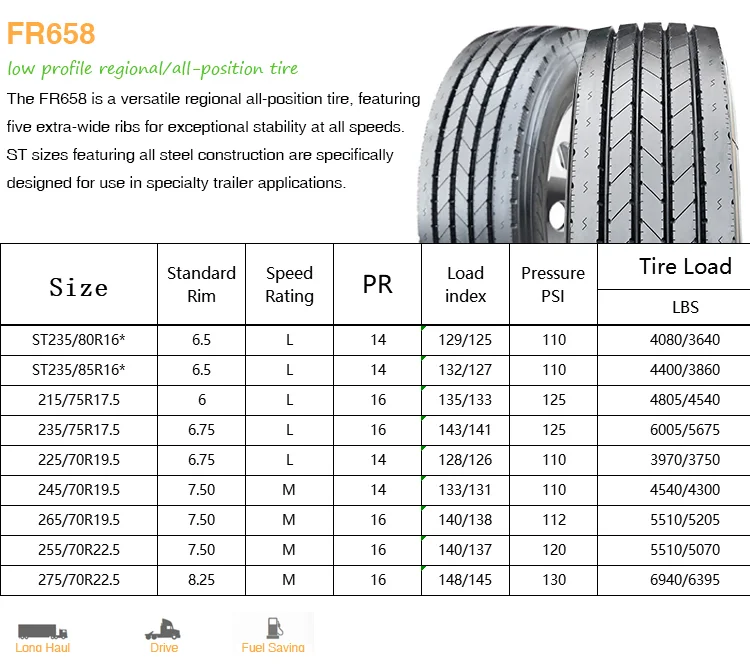
For extra security and tension for the chains, you can use regular bungee straps.
However, I bought a specialized set of tire straps, in Wyoming at a truck stop. They are very handy for securing them.
This method is where the driver lays the chains out, and installs them without actually picking them up and draping over the wheels.
However, don’t park in a chain up area, unless you are chaining up.
Pull in, select your spot, being courteous to others.
Do a couple of back and forth maneuvers to pack down the snow/move the slush. If you’ve been on the highway in snow, stop, kick off your mud flaps then pull forward or back a bit out of your snowpile.
If you have a snow shovel, clear off a bit ahead and beside the tire/axle you are chaining, or a runway to lay your chains.
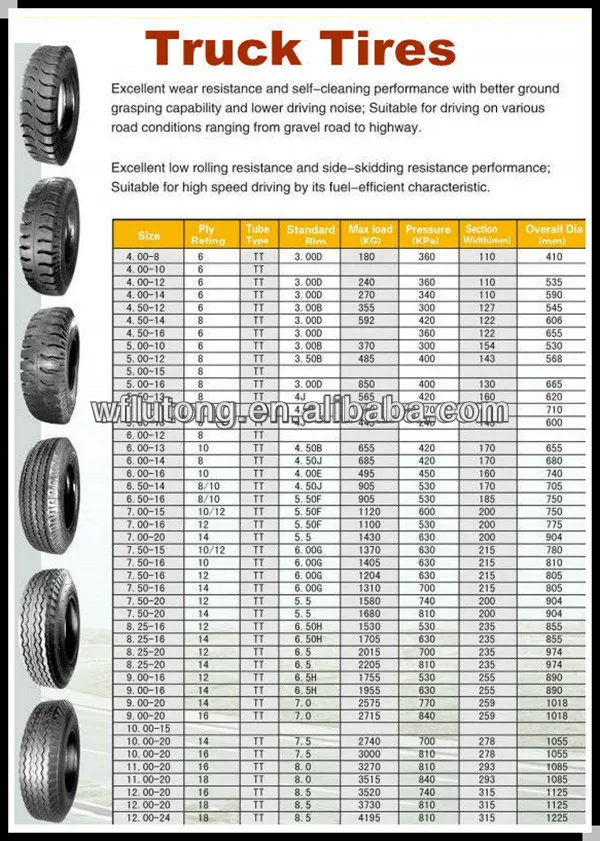
NOTE: Pay special attention to the cross chains near each end of the fittings. These get easily twisted (like a knot) where you need to spin one end thru the other to undo the twist. This is easier to spot on V-bar or studded than on regular cross chains.
Note that cams on singles should be to the outside.
On most triples, you have cams on the inside and the outside rail (not the center).

On my chains that means the round part of the half moon faces towards the hub/center of the wheel.
If you want your chains ‘upside down’ (v-Bar or studs down) or right way up. You will either be flipping the cam onto the tire (from upside down) or draping it over (from right way up).
For triples, the easiest way to do them is to lay them with the traction side up, then fold the inner side of the chain over the outer, so it is only one tire wide. Drop the double up chain over the outside tire and flip the top chain over the inside. This is far neater and easier.
If you have test fitted the chains, you should have an idea of which link you need to hook to initially.
Note that tire wear will lengthen your slack in the chain.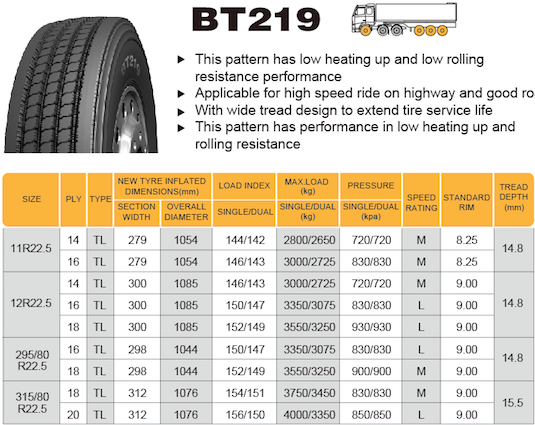 New tires will shorten the slack and open should tires have more slack than closed shoulder.
New tires will shorten the slack and open should tires have more slack than closed shoulder.
There’s 2 ways to deal with slack chain.
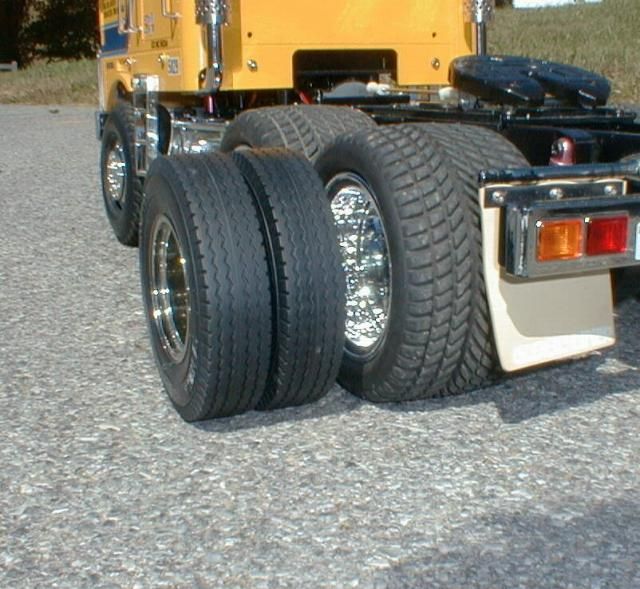
Note: This is much easier and safer to do than stopping again in another aread than where you are alread set up.
Jump back out and go back and forth and look at the chains.
Pull on them and see if there is any slack either across the cross chains on the face of the tread or in any of the side chains (inside, outside and middle if appropriate). If there is, tighten any remaining cams or if you can undo an end, and take one more link out, do it.
It may mean undoing all of the cams to loosen them up, take out a link and then re-tighten them all again.
The goal here is to get the chains as tight as possible.
Well -maintained chains will only break if they are loose, or if you abuse them.
When I initially hook up my chains, I already know which link I need on the inside (or middle and inside) and loop any excess chain at that point.
On the outside cam, I leave all the links loose until I have re-tightened after pulling forward and back to seat the chains in the tread.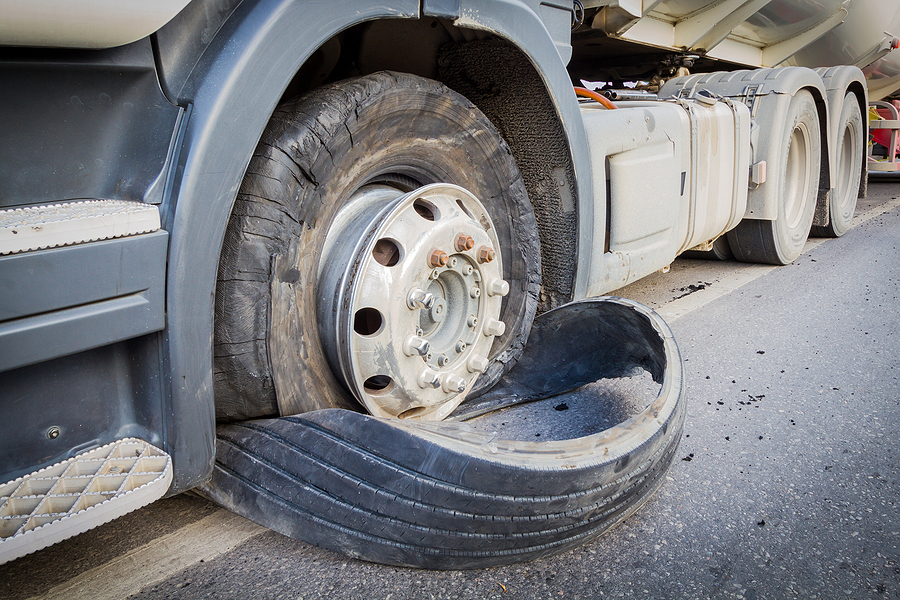 Zip ties or looped through the hook/boomer is good. This means that nothing will flail around and tear out a rub rail, fender air line, brake line or do other damage.
Zip ties or looped through the hook/boomer is good. This means that nothing will flail around and tear out a rub rail, fender air line, brake line or do other damage.
I use good cam chains, which fit my tires, so I don’t need spiders or bungees. If you do need them, use them. The goal is to take as much slack out of the chain as possible. Make sure the rubbers are in good shape or they become useless scrap on the roadways.
 This is bad either way.
This is bad either way.So assuming you’ve made it up or down the slippery hill.
Use a chain off area, parking lot or other safe spot, with 4 ways on.
Jump out and remove any bungeess/spoders that you used for tension.
Undo the cam. Sometimes you don’t need them all to unchain. Just undo the hook or boomer on the outside, and hook on the inside. Pull the loose ends of the chain to the side away from the tire and path of travel on both sides.
Move the truck forward or back to come off the chains.
** Examine the chains NOW before putting them away.
Knock whatever you can off the chains, snow , slush etc.

There are different grades. Cheap, regular steel, plated and alloy. Regular steel is preferred although they will rust. This is fine as long as it does not wear through the chains.
Alloy lasts longer, but they are expensive.
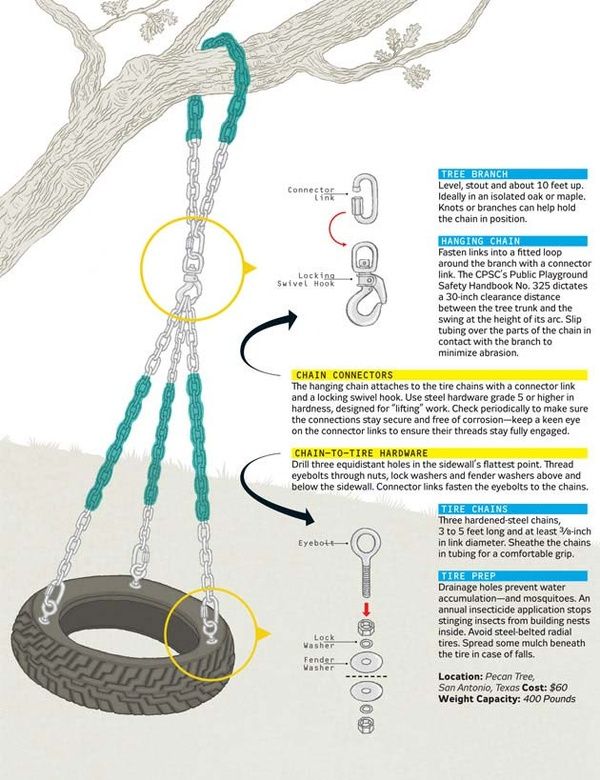 Not recommended.
Not recommended. When I have all the tire chains installed that I require and well secured, I’ll drive perhaps an 1/8th of a mile.
I then stop the truck, get out and double check everything to make sure the chains are secure and properly in place.
By driving slowly for a short distance, it’s a good way to test the security of the chaining job you just did.
The last thing any truck driver wants is for the chains to come off while driving. They can cause serious damage to the truck if they come loose.
Related > How to Slide the Fifth Wheel on a Big Rig
For truckers who get regular runs in the mountains, here’s something to consider.
I would not recommend half fenders on the truck. Quarter fenders are easier to deal with when chaining up.
It’s much easier to drape the chains over the wheels with 1/4 fenders rather than squeezing the chains up under the half fenders.
Tire chains are designed to run on snow. Once you hit wet or dry pavement, it’s time to stop and remove them.
A truck with chains installed isn’t meant to travel fast.
They are meant to get the truck through slippery and dangerous spots.
At excessive speeds, over 30-40 m.p.h., they can break away, fly loose and do serious damage to the equipment.
They can also break loose and do damage to other vehicles around the truck.
Each state and province has their own specific requirements for their chain laws. Be sure to check where you are traveling ahead of time, in order that you are prepared, in case the chain laws are in effect.
Be aware of what the requirements are, or else you’ll be forced to wait out the road closures.
Related > The Best Trucking Companies to Work For – U.S.
The maximum number of tire chains to carry is 6.
However, six tire chains for a tractor trailer can add up to a lot of weight.
When you put them away in your truck storage box, be aware that you’ve potentially gained almost 1000 pounds in weight as a result.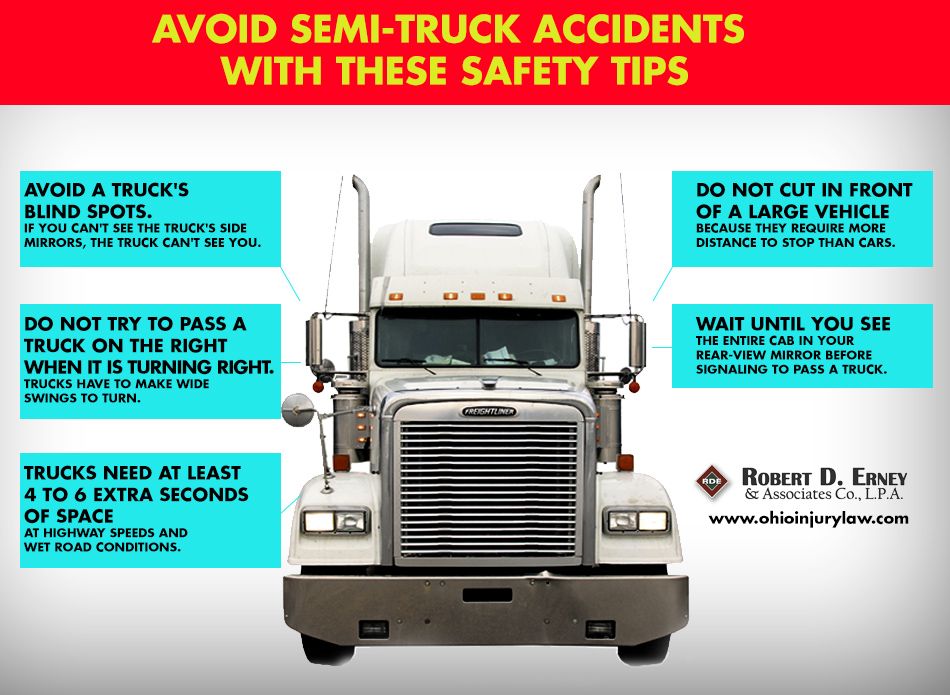
Remember this adds to your gross vehicle weight, so be aware of that before you pick up your next load.
These bad boys (in the demo) are very heavy.
They are also awkward to install, store and handle.
The welded cleats on the cross-links gives them great traction, but also adds to the weight.
When you’re carrying a full set of triple chains, you’re carrying a lot of weight. It makes the truck difficult to maneuver, and they’re especially tough to install.
Unless you do lots of mountain driving, you’re often better to just to wait it out.
If you’re in California for example, I-80, you’re better to sit in Boomtown and wait it out.
CalTrans does a good job of cleaning off I-80. By the time you invest the time and effort into chaining up your rig, you’d be better to just go in and have dinner and spend the night.
Attempting to go over the hill at night with a full set of chains, can be quite an adventure!
California sometimes requires chaining when the road is only wet. Remember, that’s hard on your chains. In this situation, I’d recommend sitting and waiting for the road to reopen to regular traffic.
Running the Coquilhalla and other more northern routes, as well as some FST’s and occasionally residential type streets. When I tighten down my chains, I know that I’m good for 40-50 kmh on bare pavement, usually the start of the bottom of the Coq based on my chain material and the fact that I have them TIGHT.
I can go up to 70 kmh in the snow if it’s either companct or fluffy. I don’t recommend these speeds for anyone that doesn’t know that they are doing or doesn’t have experience in bad weather or with their truck , chains etc.
I don’t recommend these speeds for anyone that doesn’t know that they are doing or doesn’t have experience in bad weather or with their truck , chains etc.
Everything needs to work right. I run with the radio off, window cracked open when I do this because you can ‘hear’ a problem.
Chaining up a big rig, is by no means one of the fun things about being a truck driver.
However, it can be a handy and necessary skill to know. Kind of a necessary evil.
Chaining up a truck looks difficult and complicated. Is it hard?
The secret to any task as a professional truck driver is to educate yourself on the proper procedure no matter what the task. It can save you time and keep you (and others) safe.
Is now a good time to become a truck driver?
There are many advantages to becoming a truck driver. There are also downsides to a trucking career. Much depends on an individual’s expectations of the job. The face of the trucking industry is changing now and changing for the benefit of the truck driver, as the shortage of qualified professional drivers grows exponentially.
There are also downsides to a trucking career. Much depends on an individual’s expectations of the job. The face of the trucking industry is changing now and changing for the benefit of the truck driver, as the shortage of qualified professional drivers grows exponentially.
How much is the fine for not carrying chains when it’s mandatory?
The fine varies depending on which state or province.
Are all trucks in truck driver training schools automatic?
The move in the trucking industry is toward automatic semi trucks, but there are still some training schools and trucking companies which have manual transmission trucks.
Is ‘over the road’ trucking the best truck driving job?
Over the road or OTR trucking is not for just any truck driver. It can be difficult, grueling work, depending on what trucking company the driver is employed by.
How long does it take to throw on a set of singles?
In moderately adverse conditions, it should take about 10 minutes to hang a set of chains, once you’ve had some practice.
A chain is a flexible long product made up of links connected in series and movably. This ingenious invention of mankind in modern realities has not lost its former popularity and is widely used on ships, in ports, in logging, in cargo transportation, in production, in the mining industry, agriculture, everyday life, interiors and landscape design.
Chains are distinguished by purpose, design, material, link size, strength and many other features that determine the scope of their application. Among the huge variety of link structures, four main groups can be distinguished.
This group includes steel round link chains of normal strength with a caliber from 2 to 16 mm with welded links. They are manufactured in accordance with DIN 763, DIN 5685 Form C (long link) and DIN 766, DIN 5685 Form A (short link) from grade 2 mild steel. and non-lifting loads. In the household, they are used to tie animals, raise well water, make swings. Chain branches, consisting of long links, have better mobility, but are inferior to analogues with a short link in strength.
They are manufactured in accordance with DIN 763, DIN 5685 Form C (long link) and DIN 766, DIN 5685 Form A (short link) from grade 2 mild steel. and non-lifting loads. In the household, they are used to tie animals, raise well water, make swings. Chain branches, consisting of long links, have better mobility, but are inferior to analogues with a short link in strength.
Comparison between short link and long link general purpose chain
These are products with quality class 2, 2.5, 3.5, 5, 7, 8, with a stress at a minimum breaking load of 240 to 800 N/mm². They go to the manufacture of chain slings and are used as part of various lifting and transport machines and mechanisms. With their help, overall and heavy loads are attached to water and land transport. They are mainly used with blocks and winches, for tying, suspension, lifting and holding loads; traction - for moving goods. Manufactured in accordance with GOST 2319or TU (manufacturer's internal standards).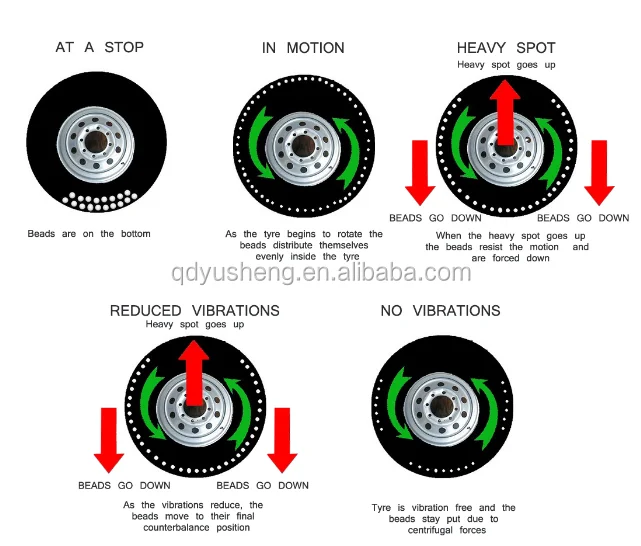
This group includes high-strength hardened chains of class T(8) with a tensile strength at breaking load of 800 N/mm² and above. They are made from a round steel bar with a section diameter of 4 to 20 mm from high-alloy steel. The place of closure of the rings is welded by electric welding and processed from the burr. Finished products undergo high temperature quenching to improve load capacity, fatigue strength, resistance to abrasive materials and excessive friction. Calibration of each link guarantees high accuracy of shapes and sizes and allows them to be used for work on sprockets of load-lifting and traction devices. Technical requirements for them establish standards GOST 30188-97 and GOST 25996 (for mining equipment).
This group of products impresses with a variety of shapes, sizes, colors and materials used, which implies many options for their application. Thanks to various coatings, they perfectly imitate non-ferrous and precious metals, which allows you to realize any creative idea in interior design and landscape design.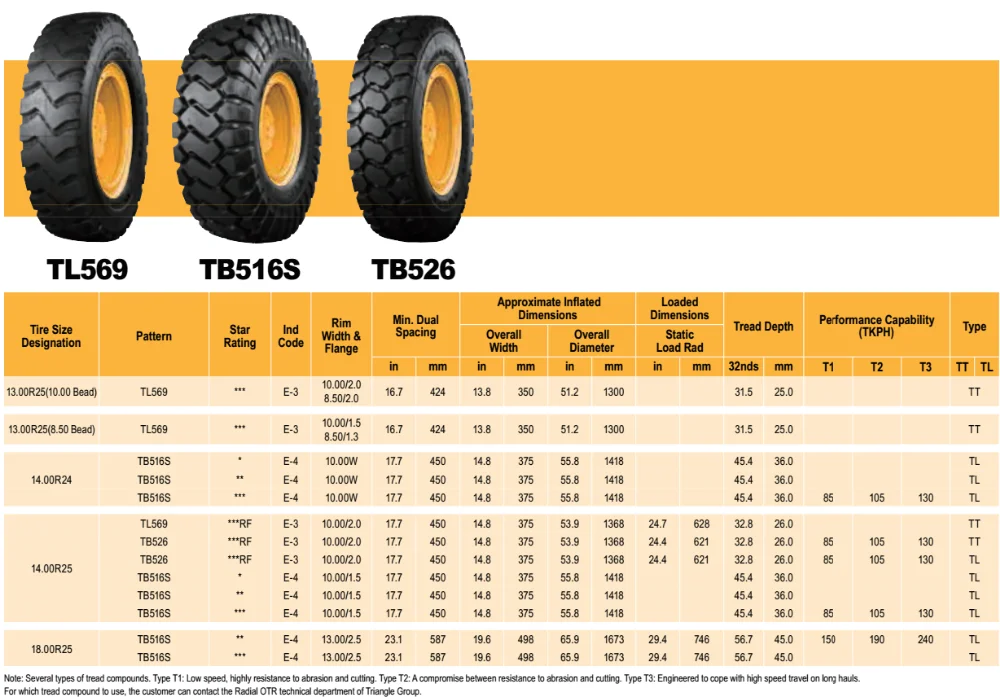 Decorative chains are often used by designers of costume jewelry, clothes and haberdashery. Plastic chains with links of bright signal colors are used for zoning public spaces, parking lots, sports grounds.
Decorative chains are often used by designers of costume jewelry, clothes and haberdashery. Plastic chains with links of bright signal colors are used for zoning public spaces, parking lots, sports grounds.
Step is the measurement of the internal length of each individual link. Manufacturers may use the letter "P" or t to indicate the pitch, for example P = 24 mm or t = 24.
Caliber is the nominal diameter (d) of the section of the round steel from which the links are made. Often, gauge refers to the size of the chain, such as 8 mm, 10 mm, 12 mm, etc. More often, however, the size designation includes caliber and pitch separated by a multiplication sign. For example: 6x19mm, 8x24 mm, 14x50 mm.
Depending on the pitch to gauge ratio, the chains are divided into:
When choosing a chain for a particular application, consumers often ask themselves: - "What is the difference between a short link and a long link chain, other than the obvious size of the links?"
The short link design (P/d < 3.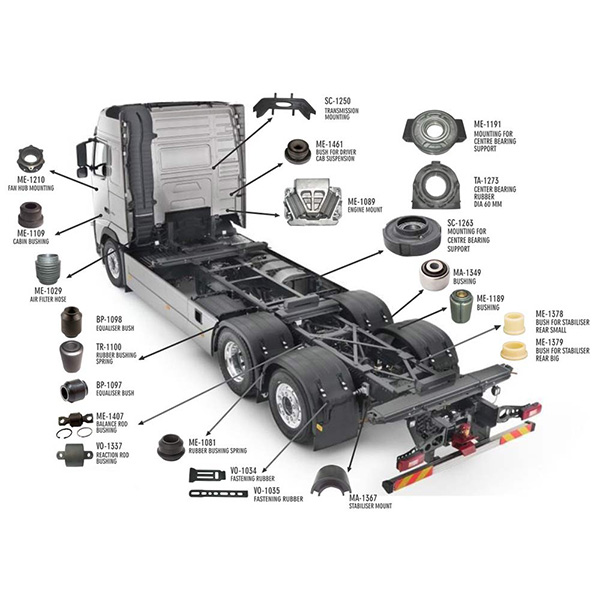 5) makes the chain easier to handle, less prone to tangling when stored in a storage container, but not as agile as a long link chain. Its main advantage is in terms of strength: with the same caliber, a chain with a short link can withstand greater loads than with a long link. It is more difficult to damage when tightening at sharp corners. Short links are tighter on the gripping hooks, so there is less risk of them slipping off.
5) makes the chain easier to handle, less prone to tangling when stored in a storage container, but not as agile as a long link chain. Its main advantage is in terms of strength: with the same caliber, a chain with a short link can withstand greater loads than with a long link. It is more difficult to damage when tightening at sharp corners. Short links are tighter on the gripping hooks, so there is less risk of them slipping off.
The long link construction (P/d ≥ 3.5) has a large degree of freedom in all directions and is better suited for fastening, extension, shortening. It is easy to make a loop out of it by threading a link into a link. But its main advantage over the short link is in less weight and price, since there are fewer rings per meter.
Conclusion: The type of chain must be selected depending on the tasks assigned to it. If mobility and weight are less important criteria than strength, then you should opt for a short link. In hoisting mechanisms with blocks and drums, only short-link chains are used for operation in order to prevent the occurrence of a large bending moment.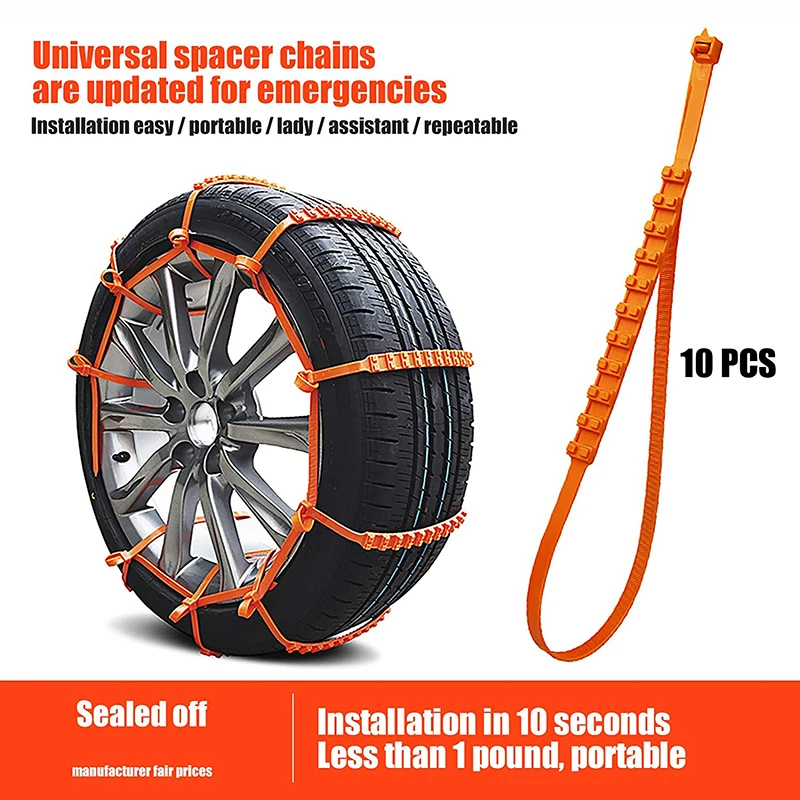
Important: When purchasing, make sure that the internal dimensions of the link are sufficient to pass a hook or other connecting elements (shackles, rings, carabiners, eyelets, etc.) through it.
Round link chains are divided into:
The calibrated chain is made of round calibrated steel and has a high accuracy of execution within the specified strict tolerance for pitch, section diameter, link width, external and internal length. The maximum deviation from the regulated dimensions is ± 3%. Calibrated chains after heat treatment are necessarily subjected to tension by a calibration load in order to obtain the specified maximum deviations of the pitch and length of the segment.
Uncalibrated chains have a rated tolerance of ±10%, therefore they are designed to work on smooth drums or in static fastening systems.
A calibrated chain is used as a flexible lifting and traction body for chain conveyors, elevators, winches, hoists and other mechanisms with gear drums or chain sprockets. It works as part of bucket conveyors, lifting equipment, traction and lifting mechanisms with manual and mechanical drives. Sprockets or drums are usually designed and manufactured to ensure compatibility with a given chain size and gauge for optimum engagement.
Note: Both types of chains can be used as load chains.
It's not enough to get the gauge and pitch right, it's important that the chain is calibrated to tight tolerances or it will "bounce" under load. When the link pitch has deviations from tolerances of more than 3%, this is difficult to determine visually, but is easily confirmed in practical tests. A slippage or sticking problem usually occurs after the chain has gone through a few turns under load.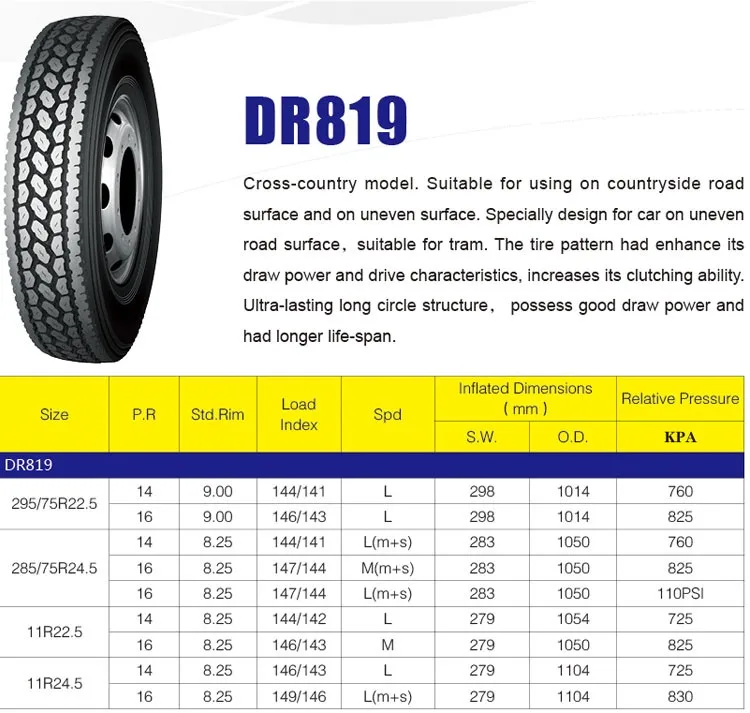
If you are looking for a calibrated chain for your anchor winch and are unsure of the quality of the sizing, there is an easy way to check that it matches the tolerance limits for your winch drum.
To do this, you need to buy a meter length of the chain branch and measure the length of 11 links. Why exactly 11 links? – because it is a generally accepted standard length. Use a ruler to measure the distance from the inside of the first link to the inside of the last link. When doing this, make sure the chain is taut to ensure an accurate measurement.
Important! The maximum pitch deviation for a calibrated chain must not exceed ±3% of the specified value!
Table 1. Normal measurement results for a calibrated short link chain DIN 766
| Caliber, mm | Pitch, mm | Length 11 links, mm |
| 6 | 18. 5 5 | 203.5 |
| 7 | 22 | 242 |
| eight | 24 | 264 |
| ten | 28 | 308 |
| 12 | 36 | 396 |
| 13 | 36 | 396 |
Tip: For European-made anchor winches, choose calibrated DIN 766 short link chains as they will fit perfectly on the drums mounted on them.
In the characteristics of the product, manufacturers indicate three types of load. The maximum working loads are based on proof tests and should never exceed the rated working loads suggested by the chain manufacturer, individual specifications or testing agency for the chain size and grade in question.
Working load (carrying capacity) - the maximum load that the product can be subjected to during operation.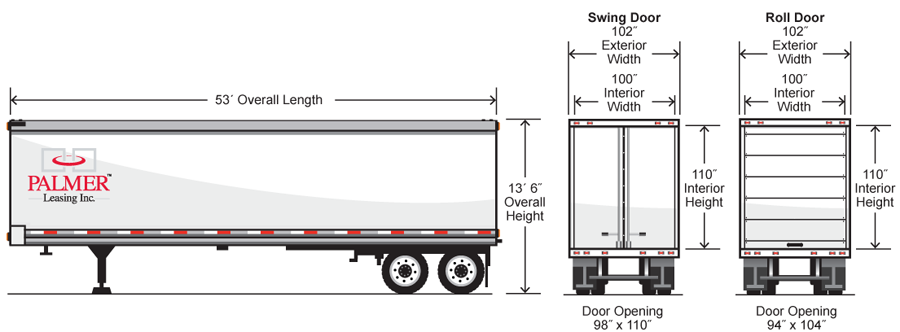 It is the breaking load divided by the safety factor. This coefficient varies from 3 to 8 depending on the purpose of the chain and the manufacturer. Usually it is 4, in which case the working load is a quarter of the breaking load.
It is the breaking load divided by the safety factor. This coefficient varies from 3 to 8 depending on the purpose of the chain and the manufacturer. Usually it is 4, in which case the working load is a quarter of the breaking load.
The proof load is the reference tensile test load that was loaded on the specimen at the factory during the test procedure. Typically, it is twice the ultimate working load, which is half the breaking load. This is a very important test, proving that each link has been welded well.
Breaking load is the ultimate tensile strength of 4 times the working load limit. Standards require a specific level of breaking load for each chain size, gauge and grade. For some manufacturers, it may exceed the minimum standard, which is reflected in the test certificate.
When choosing a welded round link chain for the lifting mechanism, a simple calculation is performed for a given load and safety factor.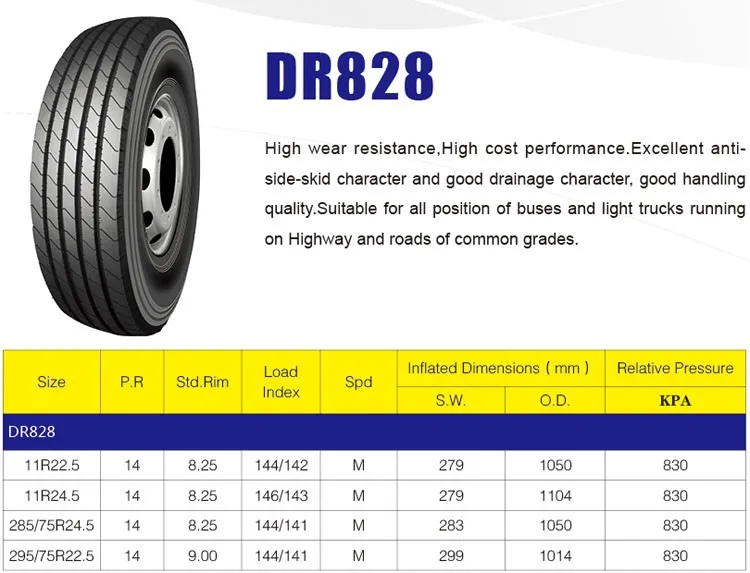
For example: For a manual hoist, the size of the calibrated chain must be selected. Assumed maximum working load: S = 12 kN (1200 kgf).
In accordance with the standards of Gostekhnadzor, we accept a margin of safety equal to 4.5: 1.
We calculate the breaking load according to the formula P = 4.5 x 12 kN = 54 kN (5400 kgf) .
According to table 2 (source: GOST 2319-81), we select a short-link calibrated chain of size 13x36 mm, for which the tensile strength is 66 kN (6600 kgf).
Table 2. Dimensions and loads for load and haul chains, type A, version 1
| Caliber, d mm | Pitch, p mm | Width b mm | Previous deviation section length l=11p | Load, kN | ||||
| nominal | prev. deviation deviation | nominal | prev.deviation | nominal | prev.deviation | trial | destructive | |
| 5 | ±0.4 | 18.5 | ±0.5 | 17 | ±0.5 | +1.5 -0.5 | 5.0 | 10.0 |
| 6 | 18.5 (19) | 20 (21) | ±0.6 | 7.0 | 14.0 | |||
| 7 | 22 | 23 | ±0.7 | 9.0 | 18.0 | |||
| eight | 23 (24) | ±0.6 | 26 (27) | ±0.8 | 13.0 | 26.0 | ||
| 9 | ±0.5 | 27 | 32 | ±0.9 | +2.5 -0.8 | 16.0 | 32.0 | |
9. 5 5 | 27 | 31 | ±1.0 | 17.0 | 34.0 | |||
| ten | 28 | 34 | ±1.1 | 20.0 | 40.0 | |||
| eleven | 31 | ±1.0 | 36 | ±1.3 | 23.0 | 46.0 | ||
| 13 | 36 | 44 (43) | ±1.6 | +3.8 -1.3 | 33.0 | 66.0 | ||
| 16 | ±0.8 | 45 (44 | 53 (54) | ±1.8 | 51.0 | 102.0 | ||
| eighteen | fifty | 60 | ±2.0 | 63.0 | 126.0 | |||
| twenty | 56 | ±1.5 | 67 | ±2.3 | +5.5 -1.8 | 80.0 | 160. 0 0 | |
| 23 | ±1.0 | 64 | 77 | ±2.6 | 100.0 | 200.0 | ||
| 26 | 73 | ±2.0 | 87 | - | - | 126.0 | 252.0 | |
| 28 | 78 | - | 94 | - | - | 150.0 | 300.0 | |
| thirty | 84 | - | 101 | - | - | 170.0 | 340.0 | |
| 33 | ±1.5 | 92 | - | 112 | - | - | 200.0 | 400.0 |
| 36 | 101 | - | 122 | - | - | 250.0 | 500.0 | |
| 39 | 109 | - | 132 | - | - | 280. 0 0 | 560.0 | |
| 42 | 118 | - | 142 | - | - | 340.0 | 680.0 | |
Quality class is a characteristic that allows you to evaluate the strength of the chain. It depends on the mechanical characteristics of the finished product, and not on the ultimate strength of the alloy used for its manufacture. The quality class is usually indicated by numbers from 2 to 12. Some standards, for example, GOST 29996-97, establish the letter designation of the class - B, C, D.
Chains of normal strength (cargo, traction and general purpose), depending on the mechanical properties, have the appropriate quality class - 2; 2.5; 3; 3.5; 5; 7, and high-strength (lifting) class 8, 10, 12 (T8, T10, T12).
Table 3. Strength values for chains of various quality grades
| Quality class | 2 | 2. 5 5 | 3.5 | 5 | B | 7 | 8(C) | 10(D) |
| Test load stress, N/mm | 75-120 | 120 | 240 | 315 | 500 | 600 | 640 | 800 |
| Tension under breaking load, N/mm | 150-240 | 240 | 360 | 500 | 630 | 750 | 800 | 1000 |
With the same nominal diameter of the links, the load capacity of the chain of the 8th quality class is 50% higher than the load capacity of the chains of the 5th quality class, and the load capacity of class 10 chains is 25% higher than that of products of quality class 8. Accordingly, the load capacity of class 12 is 25% higher than class 10.
The use of high-strength chains in lifting and rigging operations allows you to reduce the weight of chain slings. With equal load capacity, the weight of the chain of the 8th quality class is 30% of the weight of the 3rd class. The higher the quality class, the higher the surface hardness of the bows and the higher the wear resistance and susceptibility to damage from sharp edges.
With equal load capacity, the weight of the chain of the 8th quality class is 30% of the weight of the 3rd class. The higher the quality class, the higher the surface hardness of the bows and the higher the wear resistance and susceptibility to damage from sharp edges.
Their carrying capacity remains stable when operating in the temperature range from -40 to +200ºС. With an increase in temperature to +300ºС, the workload drops by 10%, and when it rises to +400ºС, it decreases by 25%. If the threshold of +400ºС is exceeded, operation is prohibited.
To ensure the stability of the car when driving on ice, loose soils and snowy winter roads, snow chains are used. These are ready-made chain products that are put on the wheels of cars and make it easy to overcome even the most impassable areas. For their manufacture, high-strength hardened galvanized steel is used, which guarantees special resistance to abrasion, reliability and durability.
The range of snow chains covers almost all possible wheel sizes. The special pattern of the ladder, diamond or honeycomb chain tread provides optimal grip and comfortable movement.
On finished chain protectors, manufacturers indicate the size of the tires and the type of vehicle for which they are intended. For those who plan to make wheel chains with their own hands, we recommend using the following gauge and link pitch:
Chain consumption depends on the wheel diameter, tread width and profile height of the tire, as well as on the selected pattern. For example, to “shod” two wheels of a passenger car in lugs with a “ladder” pattern, approximately 15 meters will be required.
One of the most reliable ways to protect an unattended motorcycle or bicycle from theft is a bike chain lock.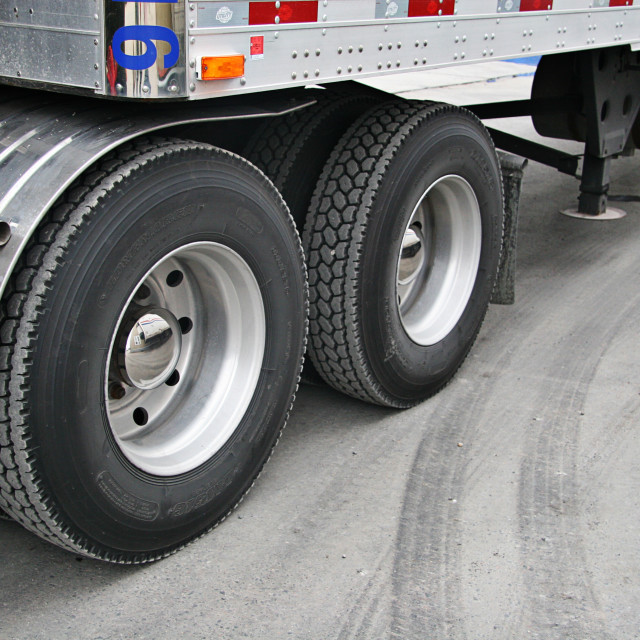 It's easy to do it yourself. To do this, you will need a piece of chain and a padlock (with a key or combination). You should not look for an old chain in the garage or purchase it at a hardware store. For an anti-theft chain-lock, you need not an economic, but a high-strength solid hardened chain.
It's easy to do it yourself. To do this, you will need a piece of chain and a padlock (with a key or combination). You should not look for an old chain in the garage or purchase it at a hardware store. For an anti-theft chain-lock, you need not an economic, but a high-strength solid hardened chain.
The anti-theft chain is made of thermally hardened steel and has an increased strength class T-8. It is difficult to cut it and it is almost impossible to bite even with a powerful bolt cutter. And not every thief carries hydraulic scissors or a grinder in his pocket. The chain links are firmly welded, so they cannot be unbent with wrenches. Even experienced hijackers will have to tinker with such a chain, and this will give you time or the attacker will look for another, less secure candidate for hijacking.
Leaving a two-wheeled "horse" in a temporary parking lot, it must be fastened to something immovable and indestructible (pole, tree, fence), and the chain must wrap around not only the wheel, but also the frame.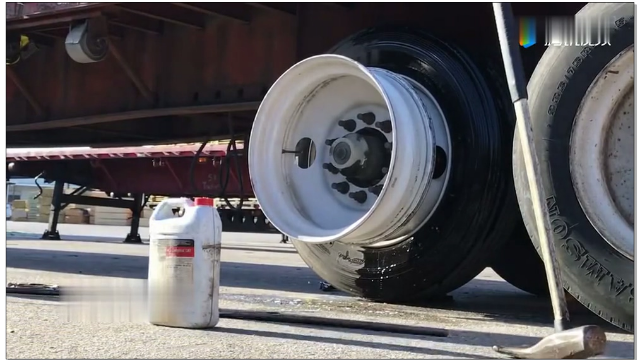 Otherwise, a surprise will await you in the form of a lone chained wheel. Depending on what you will fasten your bike or motorcycle to, the length of the chain can vary from 60 to 120 cm. As for the diameter of the chain bar, it can be 8 mm, 10 mm or 13 mm. As practice shows, the larger the caliber of the link, the less chance the hijacker has.
Otherwise, a surprise will await you in the form of a lone chained wheel. Depending on what you will fasten your bike or motorcycle to, the length of the chain can vary from 60 to 120 cm. As for the diameter of the chain bar, it can be 8 mm, 10 mm or 13 mm. As practice shows, the larger the caliber of the link, the less chance the hijacker has.
If the chain is not in doubt about the reliability, then the weak link in this anti-theft device may be the lock. Time is important for a thief, so he is unlikely to start poking around in the castle when you can just bite his shackle. Therefore, the locking shackle of the lock must be no less strong than the chain links.
The assortment of the Krepkom store always has hardened chains of any caliber and chain locks with a high degree of protection against opening, breaking, sawing and corrosion. Instead of a bow-shaped bracket, the locks have a thick locking pin made of extra strong hardened steel. It is difficult to get close to it with wire cutters, a mount or a hacksaw, which makes it difficult to break in by force.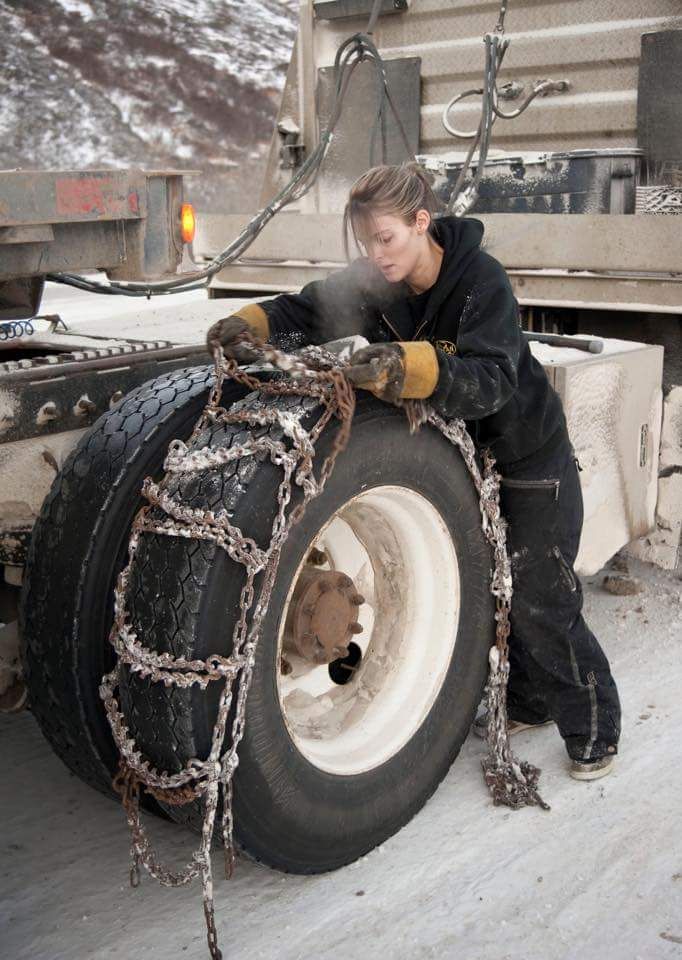
The Krepkom store offers a wide range of chains for various purposes and finished products from them (household, sanitary, decorative chains, knot, ball, anti-skid chains, for tying livestock and slipway repair, etc.). If you have any questions when choosing, our specialists are ready to advise you by phone: +8 (800) 333-21-68.
Chains, slings, rigging Updated: 08/02/2022 13:17:31
Maxim
Specialist in the field of fasteners and rigging products. More than 10 years of work in the field of construction, repair and equipment.
— "We try to convey to you only relevant and reliable information, we will be glad to hear your feedback regarding this article"
The author of the article
Maxim
Specialist in the field of fasteners and rigging products. More than 10 years of work in the field of construction, repair and equipment.
— "We try to convey to you only relevant and reliable information, we will be glad to hear your feedback regarding this article"
The author of the article
Rate
Submitted successfully, Thank you for rating!
Click to rate
Updated:0002 Winter tires, which save our cars on snowy roads and during ice, appeared on the Russian market not so long ago. We can't even imagine that it never existed. Instead, special chains were used. As practice shows, they still have not lost their relevance. In this article, Avtosila will tell you why.
We can't even imagine that it never existed. Instead, special chains were used. As practice shows, they still have not lost their relevance. In this article, Avtosila will tell you why.
History
The history of snow chains is quite vague and has several versions. The first version awards the title of "discoverer" to Harry Widom of New York. It is believed that at 1904 he received a US patent. The grandson of the inventor claims that the idea came to his grandfather after he saw drivers wrapping the wheels with rope to increase patency on muddy and snowy roads.
The second version attributes this invention to a group of Swiss skiers. In the early 20th century, they had a car stuck in the mountains. After much torment, one of them came up with the idea to wind the chains around the wheels. Whether this is so, no one can say for sure.
But the third version has documented evidence. During the First World War, the drivers of the ambulances of the Russian army used chains for wheels, which were made in auto repair shops.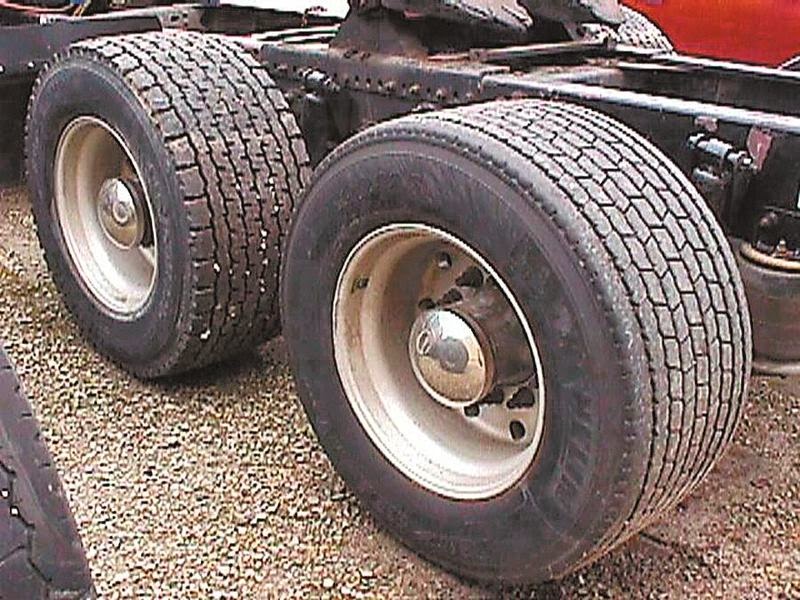
[blockquote]Today, anti-skid chains (traction control chains) are the most effective, compact and easy-to-use tool for overcoming difficult road routes.[/blockquote]
a network of chain rings.
Types
Snow chains must be matched to the tire size. Therefore, they are divided into classes:
Another way of dividing - according to the source material:
Rigid
They are made of strong steel, galvanized or painted with high-strength enamels, as well as titanium. If the chain is intended for a passenger car, then the diameter of each link is 12-18 mm. Some manufacturers offer 9mm link chains designed for low profile tires and European pattern treads. With chains for SUVs and trucks, the opposite is true: the larger the rings, the more effective the device.
Soft
Made of plastic, reinforced rubber or polyurethane. They have studded pads - lugs, a rubber band and lateral fixation.
They have studded pads - lugs, a rubber band and lateral fixation.
"Soft" chains put less load on the suspension and increase speed up to 60-80 km/h, while with "hard" chains you can not accelerate more than 50 km/h. At the same time, manufacturers do not recommend driving at maximum speeds for chains over distances of more than 40 km.
In addition, on the shelves you can find chains made of more elastic materials. Outwardly, they look like rubber bands of an expander, the nose is stronger and denser braided. With them you can accelerate up to 90 km/h, but the flotation coefficient will be significantly lower than that of "hard" chains.
When choosing an anti-skid chain, its "pattern" is important:
Ladder pattern is the simplest, in terms of execution, and quite practical. It consists of longitudinal cables connected by "segments" parallel to each other, forming a "ladder". A chain with this pattern is usually installed on non-steerable wheels, as it does not interfere with skids and side shifts.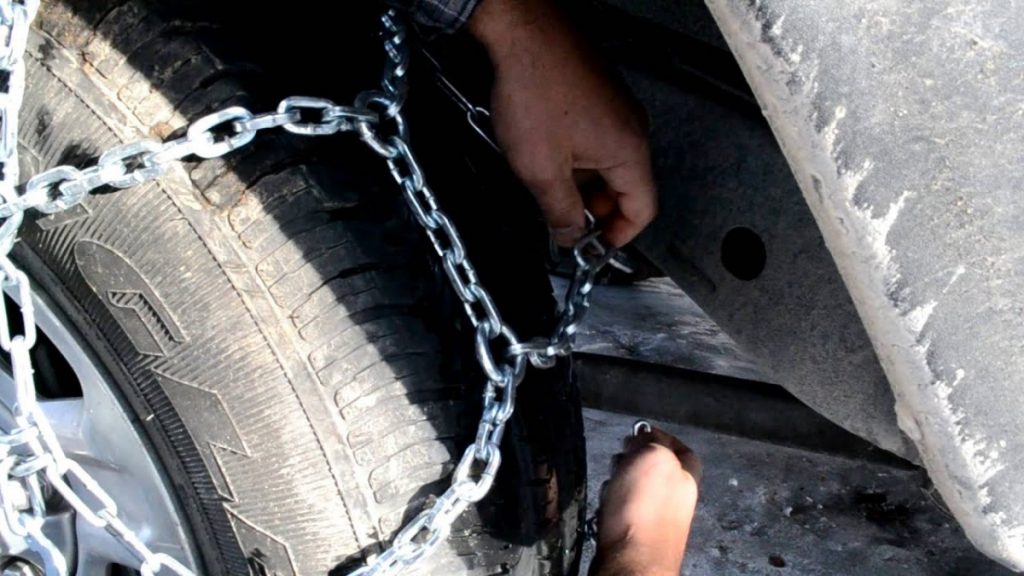 "Ladder" is suitable for movement on small sections of difficult road. It weighs little and is inexpensive.
"Ladder" is suitable for movement on small sections of difficult road. It weighs little and is inexpensive.
When choosing a chain with a ladder pattern, it is worth considering that the machine will move “jerky” and the suspension and transmission may suffer.
Diamond pattern resembles a spider web due to the diagonally connected parts. This ornament provides more comfortable movement due to continuous contact with the coating. The diamond-patterned chain can provide sufficient resistance to lateral forces and also prevent the machine from drifting when descending an icy slope.
Honeycomb Pattern - is a more complex design, with cables connected diagonally to create an interlaced hexagonal pattern. This ornament is easy to handle and most effective. It is recommended to be used for loading machines, as it withstands heavy loads and provides smooth movement, without sudden jerks.
Installing the snow chain is done in a few steps:
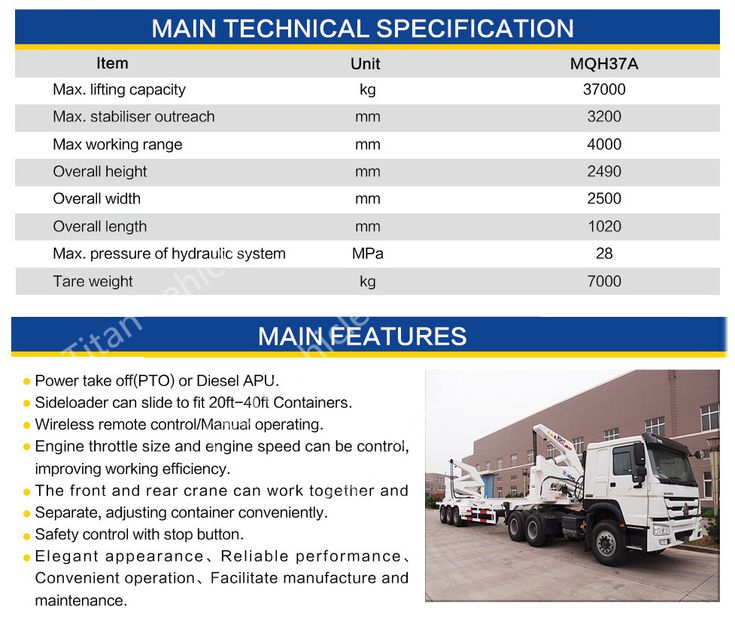
The chain is removed according to the same instructions, only in reverse order. You can also put on the chain with the help of a jack. The procedure remains the same. The difference is that you will be able to depressurize the tire first with the jack, which will ensure a better fit.
Operating conditions
